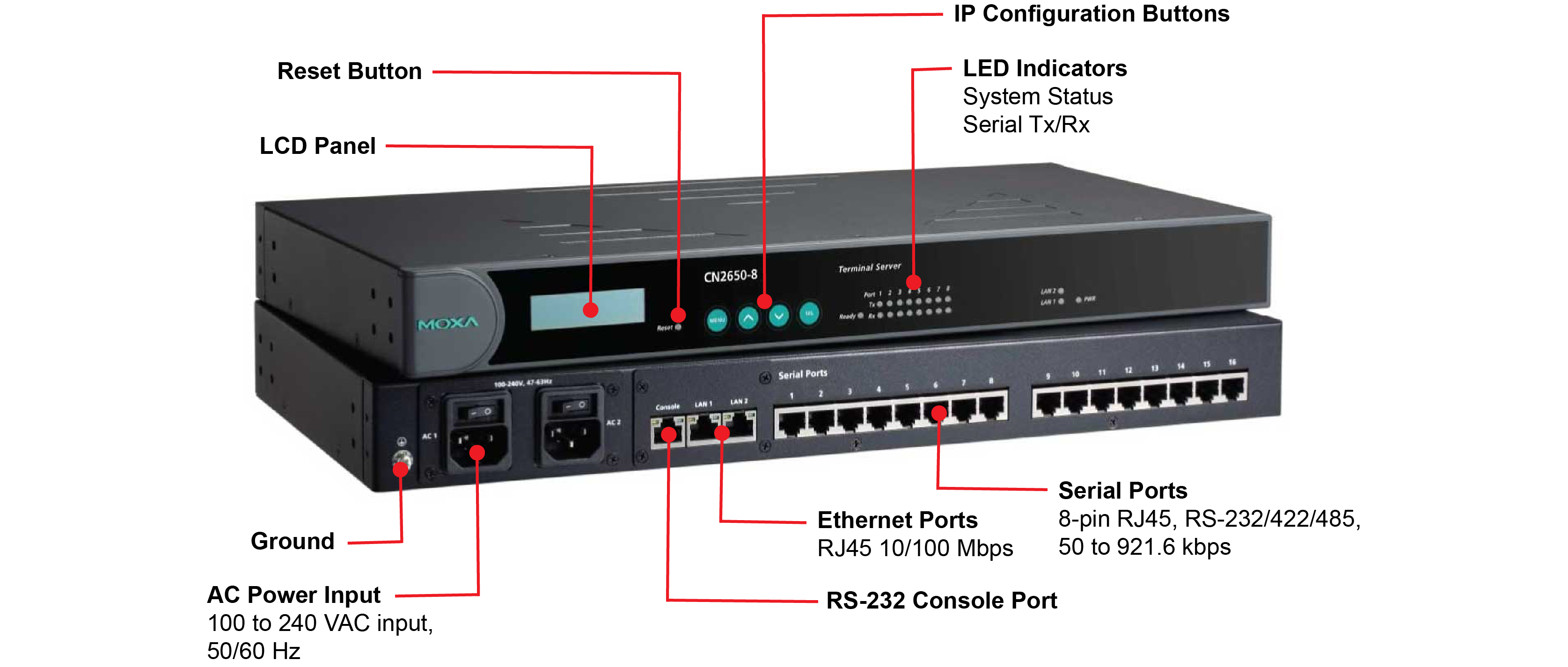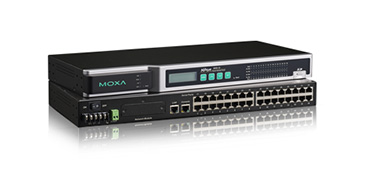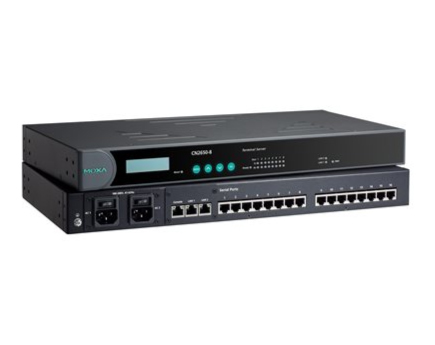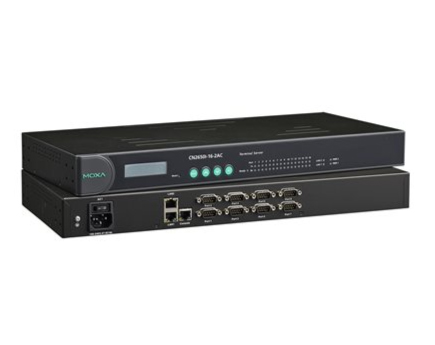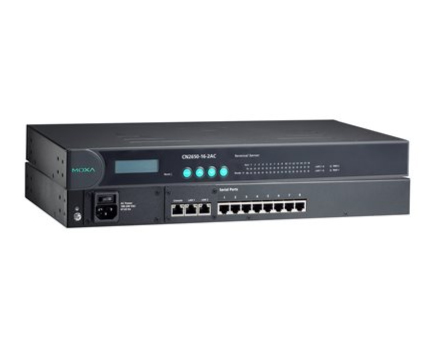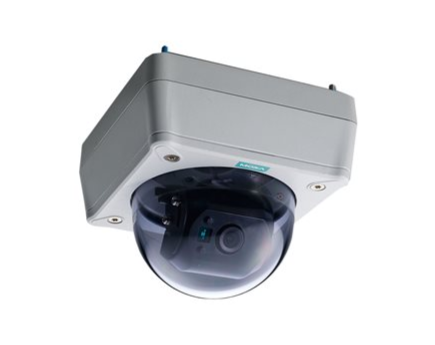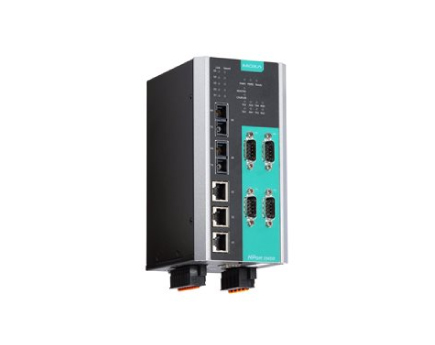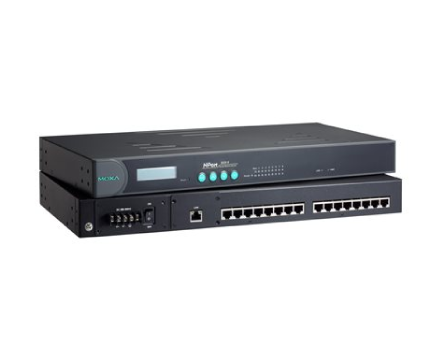Description
Introduction
Redundancy is an important issue for industrial networks, and various types of solutions have been developed to provide alternative network paths when equipment or software failures occur. “Watchdog” hardware is installed to utilize redundant hardware, and a “Token”- switching software mechanism is applied. The CN2600 terminal server uses its built-in Dual-LAN ports to implement a “Redundant COM” mode that keeps your applications running uninterrupted.
Dual-LAN Redundancy
The CN2600 has two separate LAN ports that can be connected to separate LAN networks. Dual-LAN redundancy involves setting up two separate physical networks to connect the PC host with the CN2600 (the PC host also requires two LAN cards). If one connection fails, the PC host can still communicate with your serial devices over the alternative LAN connection.
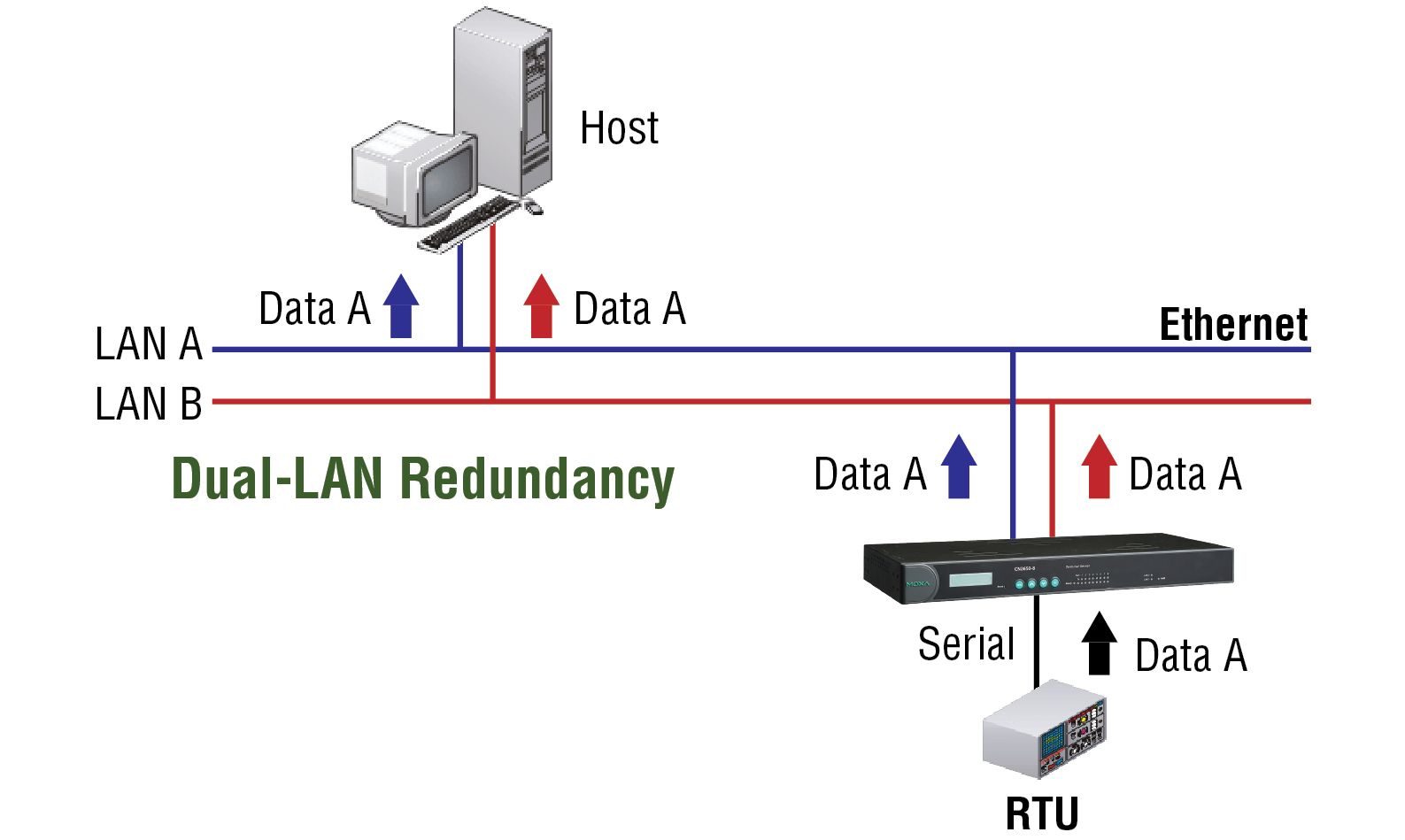
Redundant COM
Moxa offers “Redundant COM,” an easy-to-use application to provide an alternative solution for network redundancy. When the CN2600 receives a data packet from a connected device, two identical data packets are sent over two independent LAN connections to prevent lost data packets if one LAN connection becomes unavailable. The CN2600 software is programmed to automatically discard duplicate data packets.
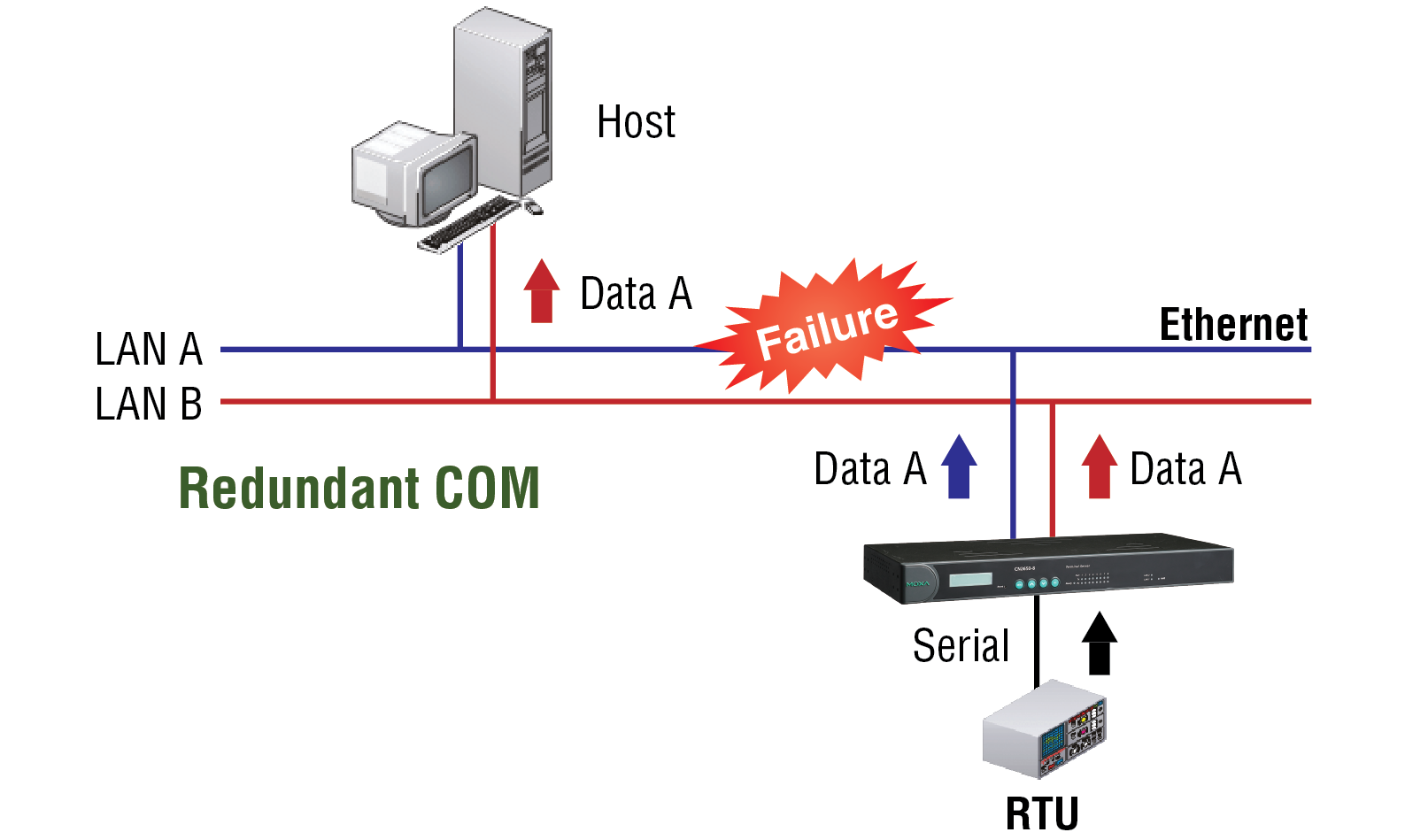
Dual-host Redundancy
The CN2600’s dual-LAN cards can also be used to set up “dual-host” redundancy. In this case, both networks (LAN A and LAN B in the figure) are connected to two different hosts. If either of the two hosts shuts down unexpectedly, the other host will still be able to communicate with serial devices connected to the CN2600.
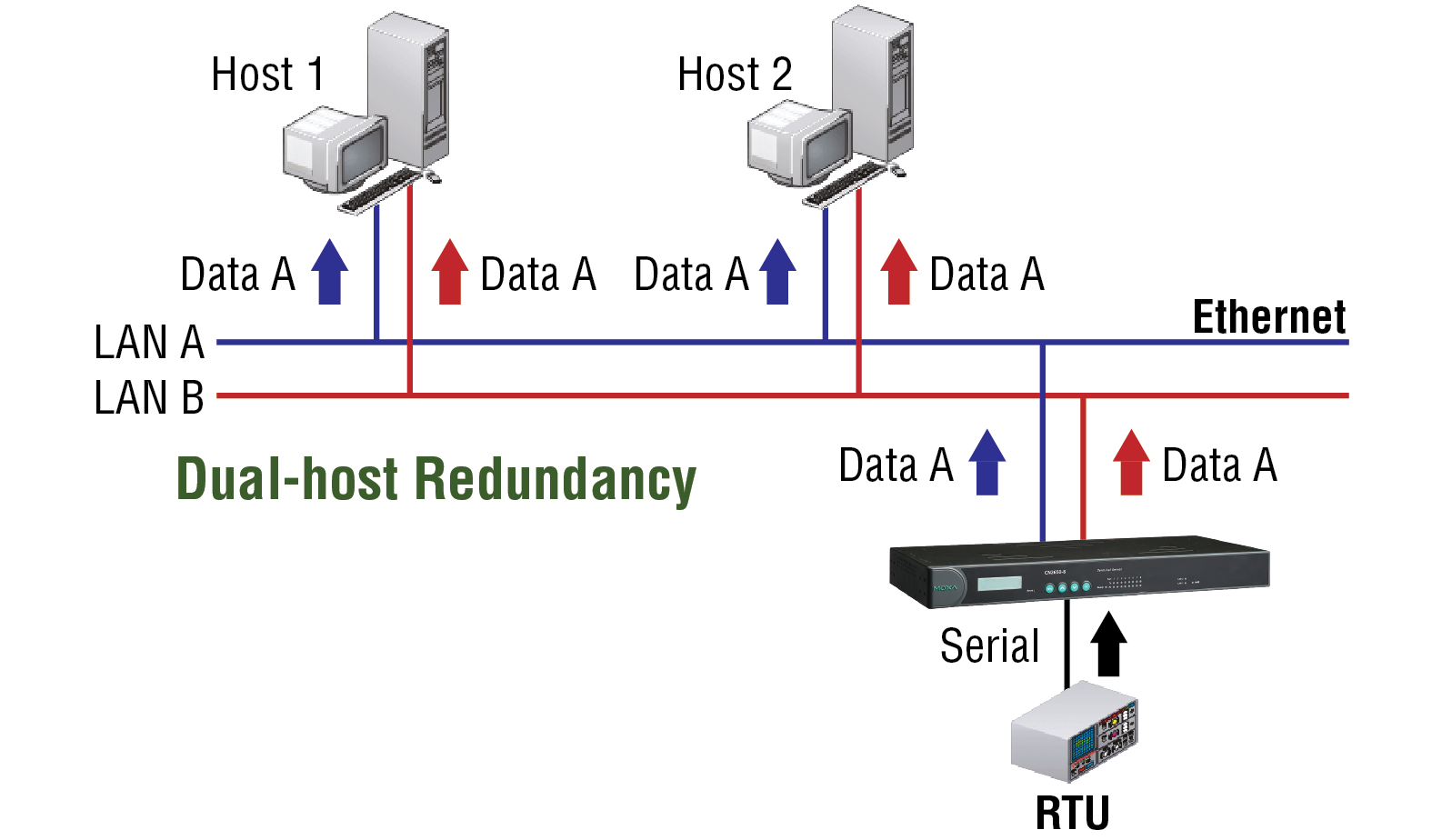
Dual-AC Model Supported
Dual-power redundancy uses two power inputs and redundant internal power supplies to ensure that all of the CN2600’s functions will be available, even in the event of power circuit failures.
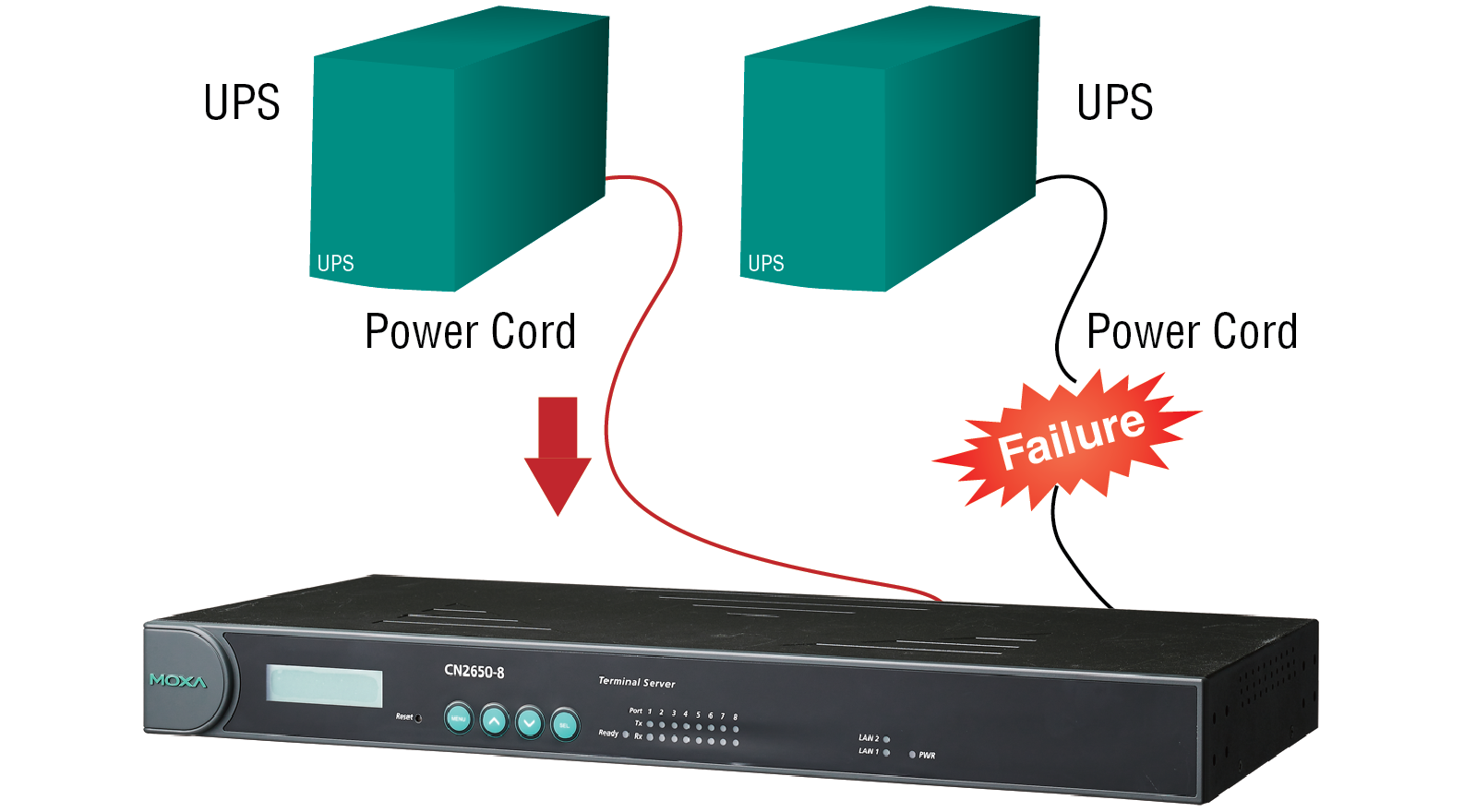
Appearance
